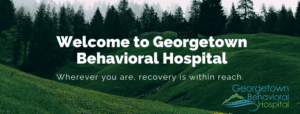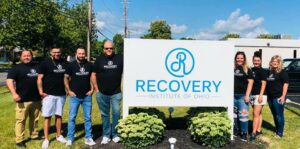Ecstasy And Other Drugs
What Is Ecstasy, MDMA, And Molly?
Ecstasy is a name for 3,4-methylenedioxy-methamphetamine, abbreviated as MDMA and also referred to as Molly and X. MDMA is a synthetic drug that acts as a stimulant and hallucinogen. MDMA was first developed by a German pharmaceutical company in 1912, “as a parent compound to synthesize medications that control bleeding,” according to the National Institute on Drug Abuse. In the 1970s and 1980s, some psychiatrists believed that MDMA could help with communication for their patients, but this theory was never properly tested. It was around this time that MDMA began appearing on the street, causing the Drug Enforcement Administration (DEA) to ban it in 1985 and label it as a Schedule I drug, where it remains today. Ecstasy and other drugs labeled as Schedule I means that they have no currently accepted medical use and a high potential for abuse.
Ecstasy is most commonly found in the nightclub and rave scene. People between the ages of 18 and 25 use the drug most often and in 2014 over 17 million people aged 12 or older reported using MDMA at least once in their life. When someone takes MDMA in a capsule or tablet form, they will feel effects within 45 minutes and the effects last an average of 3 hours. Users will feel energized, joyful, extroverted, experience emotional warmth, and an empathetic openness towards others. Users may also experience enhanced sensory perception, as well as distortions in time.
Online Addiction Counseling
Get professional help from an online addiction and mental health counselor from BetterHelp.
- Access to Therapy 24/7
- Easy Online Scheduling
- 20,000+ Licensed Therapists
Paid Advertising. We may receive advertising fees if you follow links to the BetterHelp site.
Molly is used to refer to the crystalline powder form of MDMA and there is a misconception that Molly does not contain contaminants often found in ecstasy. Any unregulated drug can contain contaminants, as there is no standard in the illegal drug trade. Mixing ecstasy and other drugs is a way for dealers to stretch their supply. Some of the other drugs found mixed with ecstasy are methamphetamine, cocaine, the diet drug ephedrine, ketamine, caffeine, and the cough suppressant dextromethorphan. Combining ecstasy with other drugs increases the risk for adverse side effects.
Some of the negative side effects of ecstasy include muscle or joint stiffness, involuntary jaw clenching, restless legs, nausea, lack of appetite, headache, hot flashes or chills, depersonalization, and disorganized thoughts. Those who take MDMA have been found to be more likely to engage in risky sexual behaviors. Regular use of MDMA has been associated with sleep disturbances, depression, concentration difficulties, and heart disease. Toxic effects like hyperthermia can occur in the body and are more likely to occur when ecstasy is mixed with other drugs.
Ecstasy And Other Drugs: A Common Combination
Despite the fact that taking ecstasy and other drugs at the same time can lead to adverse health effects, it is still a common practice. In fact, ecstasy users are more likely to use other drugs than marijuana users. One study compared the 2 and found that 46% of ecstasy users used cocaine compared to 2% of marijuana users in the last year, 38% of ecstasy users used inhalants compared to 10% of marijuana users, 38% of ecstasy users used LSD compared to 5% of marijuana users, and 17% of ecstasy users used heroin compared to 1% of marijuana users. It is common for ecstasy users to be indoctrinated into a poly-drug culture where it is common to use multiple drugs at the same time.
A study published by the National Institutes of Health found that using ecstasy made it more likely that someone would try other hard drugs, specifically cocaine and methamphetamine. The study stated that users thought of ecstasy as a low-risk drug, but their use of ecstasy led to them using other high-risk drugs. Another study found that ecstasy users often used marijuana to enhance their ecstasy high. The study also found that half of the respondents used prescription drugs, including drugs that were actually prescribed to them as well as illegal prescriptions. For some, their prescription anti-depressants prevented them from experiencing an ecstasy high and they were more likely to give up their prescriptions than give up ecstasy use.
Looking for a place to start?
Join the thousands of people that have called a treatment provider for rehab information.
Free and confidential
Available 24/7
Access to professional treatment
Dangers And Distribution Of Ecstasy
The majority of ecstasy in the United States is from China or clandestine laboratories in Canada. Asian transnational criminal organizations (TCOs) are the main supplier of MDMA in the U.S., and they work closely with Canada-based Asian TCOs to import MDMA into the U.S. across the Northern Border. It is produced and smuggled in both tablet and powder form. Sometimes, meth is misrepresented as ecstasy, so the user does not know what they are actually getting.
Throughout 2018 and 2019, there have been many incidents where meth appeared in pill form to mimic ecstasy tablets. Ecstasy tablets appear in a variety of colors with a variety of images pressed onto them. Similar cases have appeared with counterfeit Adderall pills containing meth. Synthetic Cathinones, more commonly known as bath salts, are often misrepresented as ecstasy and sold in nightlife and rave scenes because of the euphoria and energy they provide. Bath salts can cause panic attacks, delirium, paranoia, and are addictive. The danger of ecstasy and other drugs is majorly impacted by the fact that a user has no idea what they are consuming, in some cases when it is too late.
In 2013, Boston University reported multiple overdoses over Labor Day weekend in people who had taken ecstasy. Three of the overdoses were fatal, including the death of a 19-year-old student. Two more people died from an overdose at a music festival in New York City, and multiple others suffered overdoses but survived. Another report from 2015 stated that 12 students from Connecticut were hospitalized after taking ecstasy, leading investigators to believe there was a toxic batch being distributed in the area.
Common Questions About Rehab
Find Treatment
Using ecstasy and other drugs is sometimes treated as a normal and acceptable behavior in the nightlife scene, but as demonstrated in stories of fatal overdoses, it should not be a practice that is considered low risk. Whether ecstasy use leads to other high-risk drug use, or if the ecstasy is combined with other dangerous drugs, it is never a safe exercise. If you or someone you love is abusing ecstasy or other drugs, contact a treatment provider.
Published:
Author
Hayley Hudson

-
Hayley Hudson is the Director of Content at Addiction Center. She earned a B.A. in Communications from the University of Central Florida and has 6 years of professional writing experience. A passion for writing led her to a career in journalism, and she worked as a news reporter for 3 years, focusing on stories in the healthcare and wellness industry. Knowledge in healthcare led to an interest in drug and alcohol abuse, and she realized how many people are touched by addiction.
- More from Hayley Hudson
Reviewed by Certified Addiction Professional:
David Hampton

A survivor of addiction himself, David Hampton is a Certified Professional Recovery Coach (CPRC) and a member of the National Association of Alcohol and Drug Abuse Counselors (NAADAC).
- More from David Hampton
Sources


Recovery Starts Today
Call Now For Addiction Support



Recovery Centers of America Capital Region
Waldorf , MD

New Hope Healthcare Institute
Knoxville , TN

New Hope Healthcare – Teen Rehab
Knoxville , TN

Georgetown Behavioral Hospital
Georgetown , OH

Newport Academy – Teen Rehab Center
Atlanta , GA

Recovery Centers of America at Monroeville
Monroeville , PA

Banyan Treatment Centers – Delaware
Milford , DE

Recovery Centers of America at Bracebridge Hall
Earleville , MD


Recovery Centers of America at Lighthouse
Mays Landing , NJ

Recovery Centers of America at Devon
Devon , PA

Boca Recovery Center – New Jersey
Galloway , NJ

Banyan Treatment Centers – Philadelphia
Philadelphia , PA
